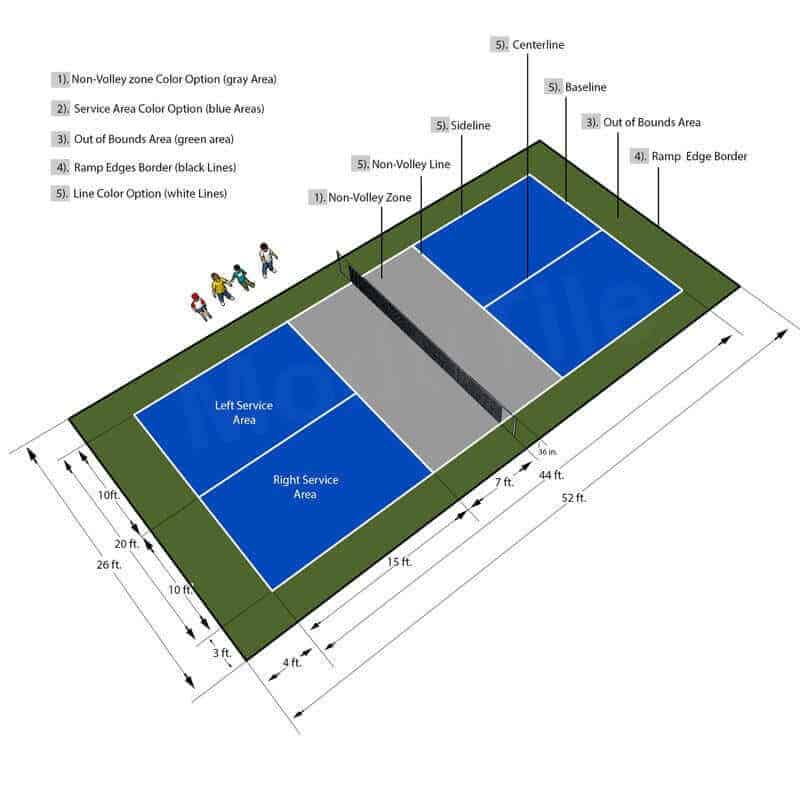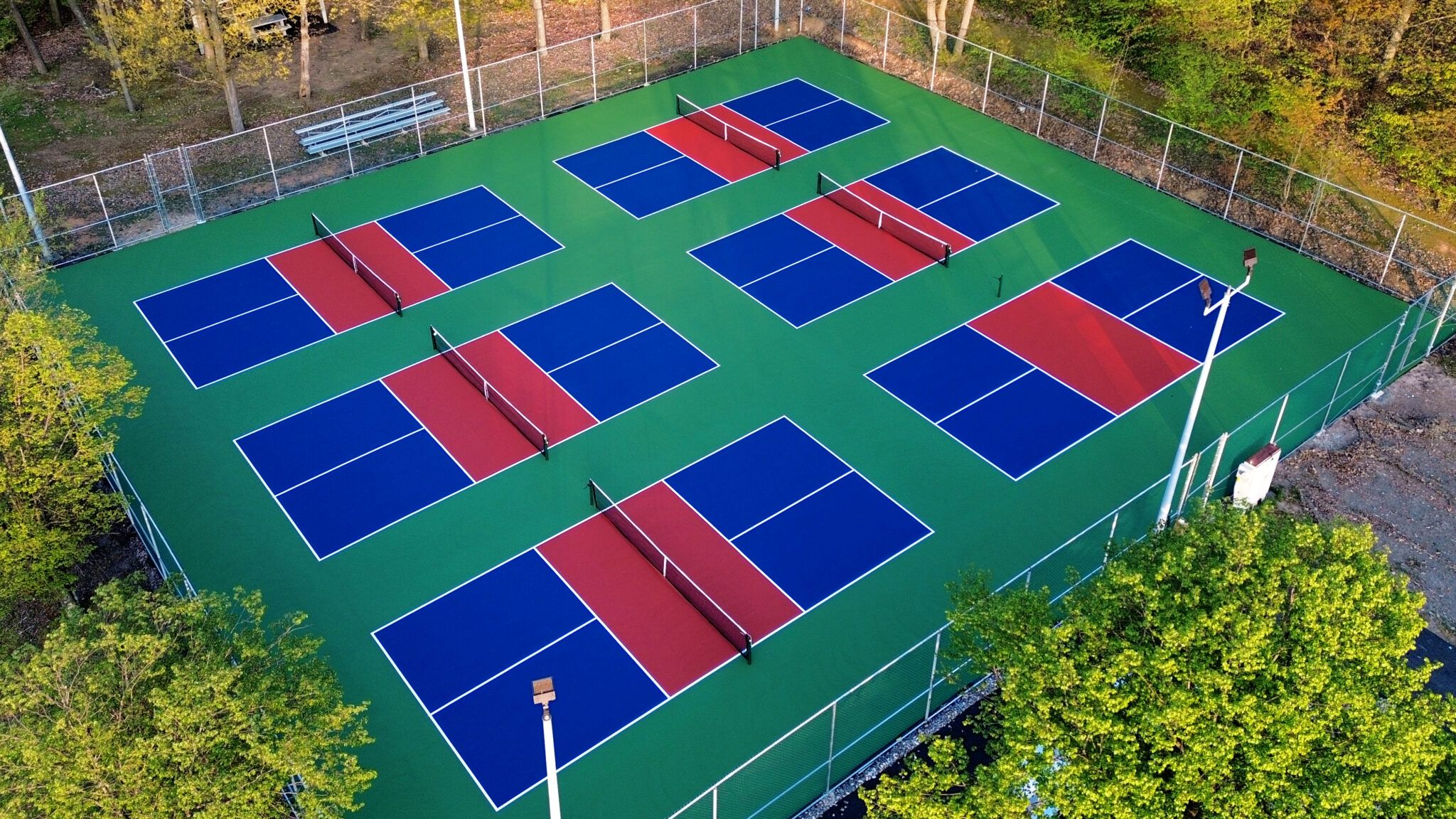Pickleball Court Construction-- Professional Installment for Your Dream Court
Pickleball Court Construction-- Professional Installment for Your Dream Court
Blog Article
Sustainable Practices in Pickleball Court Construction You Ought To Know
As the popularity of pickleball proceeds to climb, so also does the demand for lasting methods in court building. This approach not just addresses ecological issues however also enhances the longevity and capability of the courts. From picking eco-friendly products to implementing reliable drainage and energy-saving lights options, there are various strategies to take into consideration. Yet, the influence of these methods expands far past the court itself. Understanding just how each element adds to a much more sustainable future welcomes additionally exploration right into the intricate equilibrium in between leisure growth and environmental stewardship.
Choosing Eco-Friendly Materials
Choosing environment-friendly products is a crucial action in the building and construction of sustainable pickleball courts. The option of sustainable materials not only decreases ecological impact yet also improves the durability and efficiency of the court. Trick products consist of reused rubber for the surface area, which uses outstanding longevity and shock absorption while drawing away waste from land fills.
In addition, making use of in your area sourced products reduces transportation exhausts and sustains regional economies. Pickleball court construction. Utilizing native woods for secure fencing and seats can provide a lasting aesthetic while making certain resilience versus the aspects.
Including permeable products for court foundations can even more add to sustainability by allowing for all-natural water drainage and decreasing overflow. These options not only safeguard local communities yet also advertise healthier play atmospheres.
Reliable Drainage Solutions
While the selection of green materials is important, applying reliable drainage services is similarly essential for maintaining sustainable pickleball courts. Appropriate water drainage not just protects the court surface from water damage but also reduces erosion and overflow, promoting environmental honesty.
Reliable drainage systems can consist of absorptive paving, which enables water to infiltrate the ground instead of merging externally. This reduces the chance of standing water, which can lead to mold and mildew and various other upkeep concerns. Furthermore, integrating tactically placed drainage networks and swales can route excess water far from the court area, ensuring a completely dry having fun surface and protecting against dirt erosion.
Making use of native vegetation in the landscape design around the courts can further boost drain by absorbing excess water and reducing overflow. These plants call for less irrigation and promote biodiversity, straightening with sustainable techniques.
Additionally, it is vital to consistently maintain the drain system to ensure its long-lasting performance. This includes clearing up debris and surveillance for blockages. By prioritizing reliable water drainage options, pickleball court producers can substantially add to the sustainability and longevity of the facility, eventually benefiting both gamers and the atmosphere.
Energy-Efficient Illumination Options
As the need for pickleball continues to grow, incorporating energy-efficient lights alternatives right into court layout has become progressively crucial for sustainability. Standard lights systems frequently consume excessive energy, contributing to greater operational costs and environmental influence. Adopting modern, energy-efficient modern technologies is vital for both new constructions and renovations.
LED (Light Emitting Diode) lighting attracts attention as a leading choice due to its long life and energy savings (Pickleball court construction). Contrasted to conventional lights, LEDs utilize about 75% less power and can last up to 25 times much longer, considerably reducing maintenance prices. In addition, the directional nature of LED illumination decreases light pollution, ensuring that lighting is concentrated on the court as opposed to surrounding locations.

Lasting Surface Alternatives
Discovering lasting surface alternatives for pickleball courts has obtained traction among gamers and builders alike. The emphasis on environment-friendly products not just aligns with the growing environmental understanding however likewise improves the performance and toughness of the courts.
One prominent option is making use of recycled rubber, which can be sourced from utilized tires. This material offers outstanding shock absorption, decreasing the threat of injuries for gamers while advertising sustainability. In addition, modular floor tiles made from recycled plastics supply an additional viable alternative. These tiles are very easy to replace and install, and their convenience allows for various court configurations.
All-natural lawn courts are likewise arising as a lasting choice, promoting biodiversity and lowering the warmth island impact. However, they need normal upkeep and water, which may not line up with all sustainability objectives.

Water Preservation Strategies

Another reliable method involves the installment of rainwater harvesting systems. These systems collect and store rainwater for usage in keeping court surface areas and landscaping. This strategy not only conserves safe and clean water but additionally reduces dependence on municipal sources.
Moreover, utilizing drought-resistant landscape design around the courts is crucial. Native plants need much less water and are much better adapted to regional environment problems, thus reducing general water consumption. Furthermore, making use of reliable irrigation systems, such as drip irrigation, makes certain that water is supplied straight to plant origins, reducing dissipation and waste.
Verdict
Including sustainable methods in pickleball court construction helpful hints considerably adds to environmental preservation and source efficiency. By prioritizing these methods, the building and here are the findings construction of pickleball courts can align with wider environmental goals while advertising long life and functionality within communities.
As the popularity of pickleball continues to increase, so as well does the requirement for sustainable practices in court building.Selecting eco-friendly materials is a critical action in the building and construction of lasting pickleball courts. By focusing on energy-efficient lighting options, pickleball court fitters can add to a much more sustainable future while meeting the needs of stakeholders and gamers alike.Integrating lasting surface area options not only enhances the efficiency of pickleball courts however likewise paves the means for implementing reliable water conservation techniques.Incorporating lasting techniques in pickleball court building and construction substantially contributes to ecological preservation and source effectiveness.
Report this page